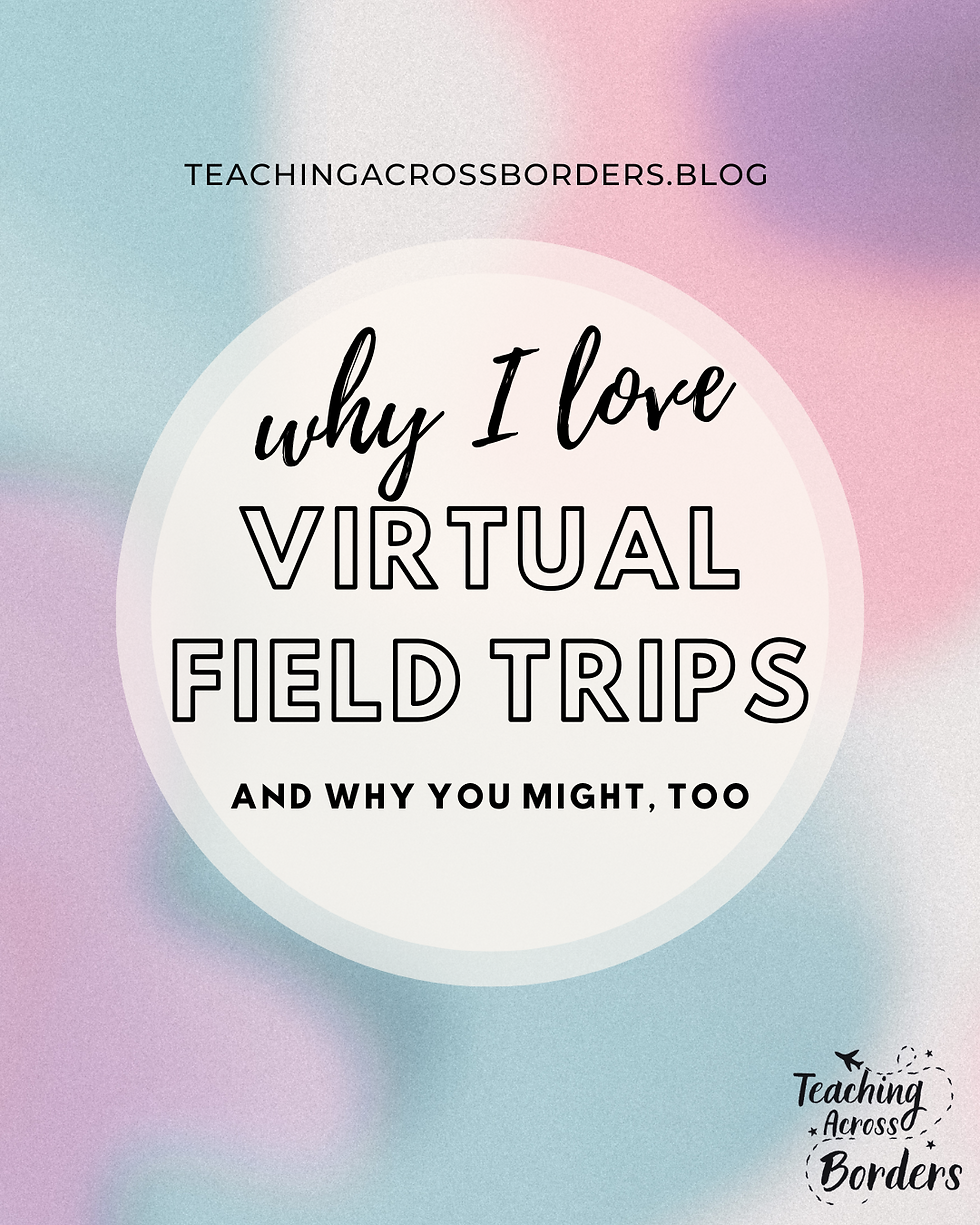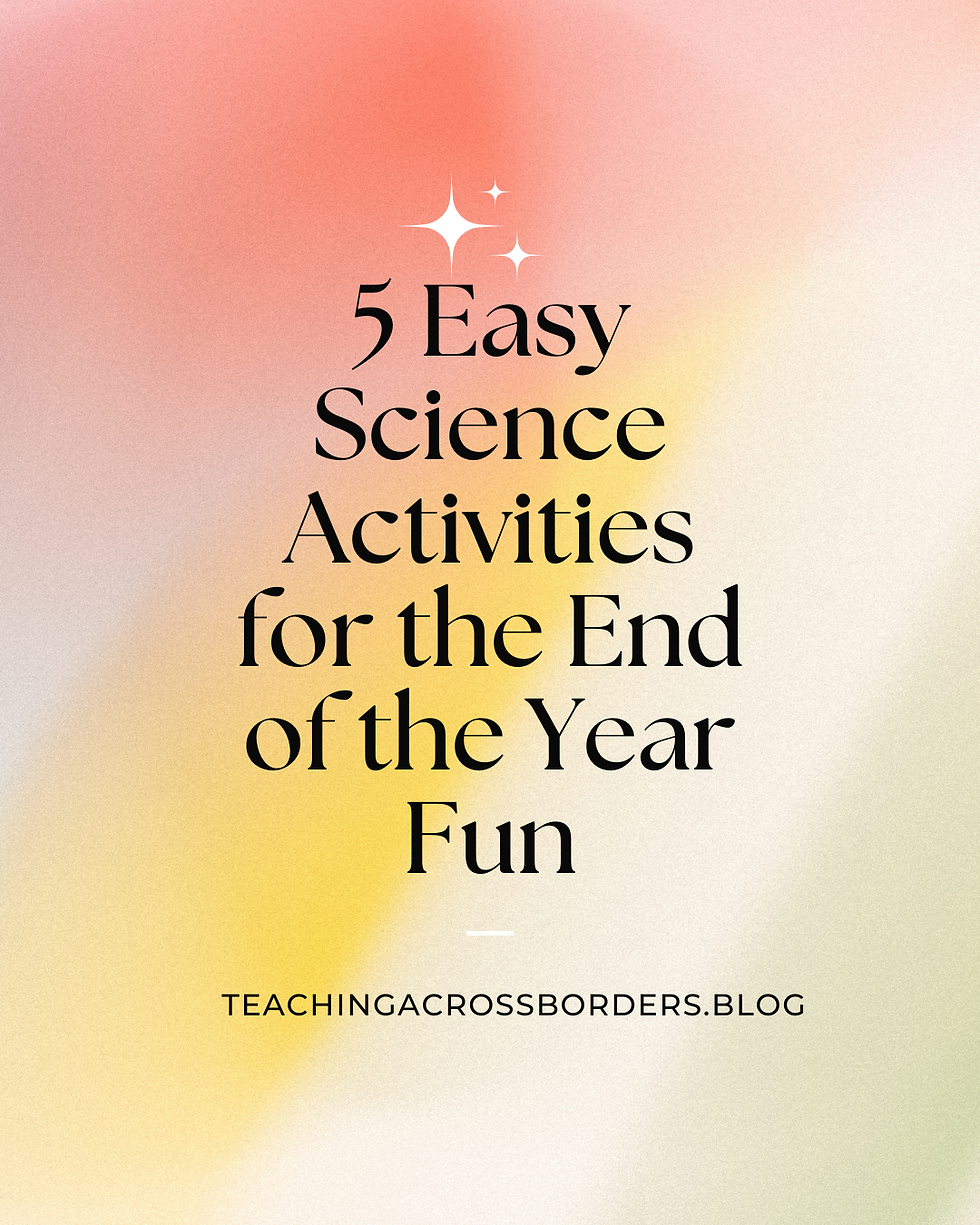Bringing Project-Based Learning to Life in Your Classroom
- Laura Swallow

- Dec 7, 2023
- 4 min read
Updated: Sep 25, 2024
If you've ever wanted to shake things up in the classroom and make learning more real and exciting for your students, then project-based learning (PBL) might just be your new best friend! PBL is all about giving students hands-on, meaningful tasks that get them thinking critically, problem-solving, and working together to solve real-world challenges. 🛠️
Unlike traditional methods where students passively take in information, PBL flips the script. They get to own their learning by diving into engaging projects—and let me tell you, the results are amazing!
What is Project-Based Learning?
In a nutshell, PBL is a teaching approach where students gain knowledge by tackling real-world problems. Instead of memorizing facts, they’re applying what they know to create something that matters. It's often interdisciplinary, meaning students can flex their skills across multiple subjects at once.
In a PBL setting, teachers are more like guides or coaches, helping students navigate their projects and nudging them along when they need it. Students collaborate, research, analyze, and create presentations or products to showcase what they’ve learned. And the best part? They’re developing all those critical thinking, communication, and collaboration skills that are so essential for success in today’s world. 🌍
Why is PBL So Powerful? 💡
PBL makes learning relevant and fun. Kids get to work on projects that speak to their interests and tackle real-world issues, which ramps up their motivation and enthusiasm. When students see how what they’re learning applies outside the classroom, they naturally engage more deeply and retain the information longer. 🙌
Plus, PBL helps students develop those 21st-century skills we’re always talking about—like creativity, problem-solving, and teamwork. These are the skills they’ll need to thrive in their future careers, no matter what path they choose.
For us teachers, PBL is a chance to step into a different role—not just as lecturers, but as mentors. We get to see our students shine in a more authentic way, and it even gives us more opportunities to collaborate with other educators on creating exciting, curriculum-aligned projects. Win-win!
Ready for Some PBL in Action? 🤩
Let’s talk examples! Here are some project-based learning ideas that you can easily implement in your classroom:
Create a Sustainable Community: Get your students thinking about the environment by designing a model community that uses sustainable practices like renewable energy and waste management. They'll research, analyze data, and present their findings, all while thinking about how we can protect our planet. 🌱
Historical Reenactments: Have your students choose a historical event and dive into research to recreate the time period. They can write scripts, create costumes, and perform a reenactment for their classmates. This kind of project deepens their understanding of history and builds empathy.
PBL Across Different Subjects 🧠🔀
The best thing about PBL is that it works in any subject area! Check out these ideas:
Science: Have students design and conduct experiments to explore real-world phenomena.
English: Let them create their own graphic novels based on a book they’ve read—talk about blending creativity with literacy!
Math: Give them a chance to apply geometry by building structures with different materials.
The sky’s the limit here—just align the project with your learning goals and let your students' creativity shine. ✨
How to Get Started with PBL (Without Losing Your Mind) 😅
We all know implementing something new can feel a bit overwhelming, so here’s a simple
approach to get you started:
Set Clear Objectives: Make sure your project is aligned with curriculum standards. You want to make sure students are hitting the key skills and content areas they need.
Plan It Out: Think through the resources, materials, and timeline you’ll need. Consider scaffolding if your students are new to PBL.
Assess Along the Way: Use check-ins and reflections so students can monitor their progress. Provide regular feedback and encourage collaboration.
Wrap It Up: When the project is done, assess their work using clear criteria. Rubrics are a great way to keep expectations clear and consistent!
Assessing Student Learning in PBL 📊
One of the coolest parts of PBL is that assessment goes beyond just a multiple-choice test. We’re talking about presentations, exhibitions, portfolios—things that let students show what they know in a real and meaningful way. You can use formative assessments (think observations, checklists, discussions) to track their progress throughout the project, and summative assessments at the end to give a final evaluation. And don’t forget peer and self-assessment—it’s a great way to get students reflecting on their own learning!
Tools & Resources for PBL 💻🛠️
There are so many tools to make PBL easier to implement. Sites like Edutopia, TeachThought, and the Buck Institute for Education are packed with resources and lesson ideas. And don’t forget technology! Platforms like Google Classroom and Microsoft Teams make collaboration a breeze. Plus, digital tools like video editing software or graphic design apps can help students get extra creative with their projects.
Looking for Ready-Made PBLs? 🎬🏡🚚
If you're ready to dive in but don't want to reinvent the wheel, check out these pre-made PBLs I’ve created just for upper elementary and middle school students:
You can grab any of these or explore my store for even more options! Trust me, your students are going to LOVE these projects—and you'll love seeing how much they learn along the way. 💪
So, what are you waiting for? Bring PBL into your classroom today and watch your students become problem-solving, critical-thinking, creative geniuses! 🧠💡







Comments